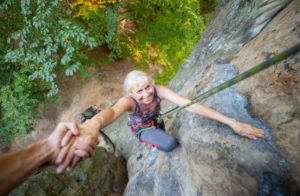
Yoga is a mind and body practice that typically combines physical postures, breathing exercises, and relaxation. Researchers are studying how yoga may help improve health and to learn more about its safe use in older adults.
Recent studies in people in their late 40’s have found that yoga is helpful in reducing chronic low-back pain and improving function. However, evidence is not yet available on its effectiveness and safety for older adults.
If you’re thinking about practicing yoga, keep the following in mind:
Put safety first. Yoga is generally safe in healthy people. However, if you have special health considerations such as a joint replacement, arthritis, balance problems, high blood pressure, glaucoma, or other health issues, talk with your health care provider before starting yoga. Start with an appropriate yoga class—such as one called Gentle Yoga or Seniors Yoga—in order to get individualized advice and learn correct form.
Look for a well-trained instructor who’s attentive to your needs. Ask about the teacher’s experience and training. Standards for teacher training and certification differ depending on the style of yoga. The International Association of Yoga Therapists has developed standards for yoga therapy requiring at least 800 hours of training.
Practice mindfully. Be sure to let your yoga teacher know about any medical issues you have and ask about the physical demands of yoga. Listen to your body. Yoga poses should be modified based on individual abilities. Be careful to avoid overstretching. Because older adults are at higher risk of developing strains and sprains when doing yoga, you may need to modify or avoid some poses to prevent injury.
